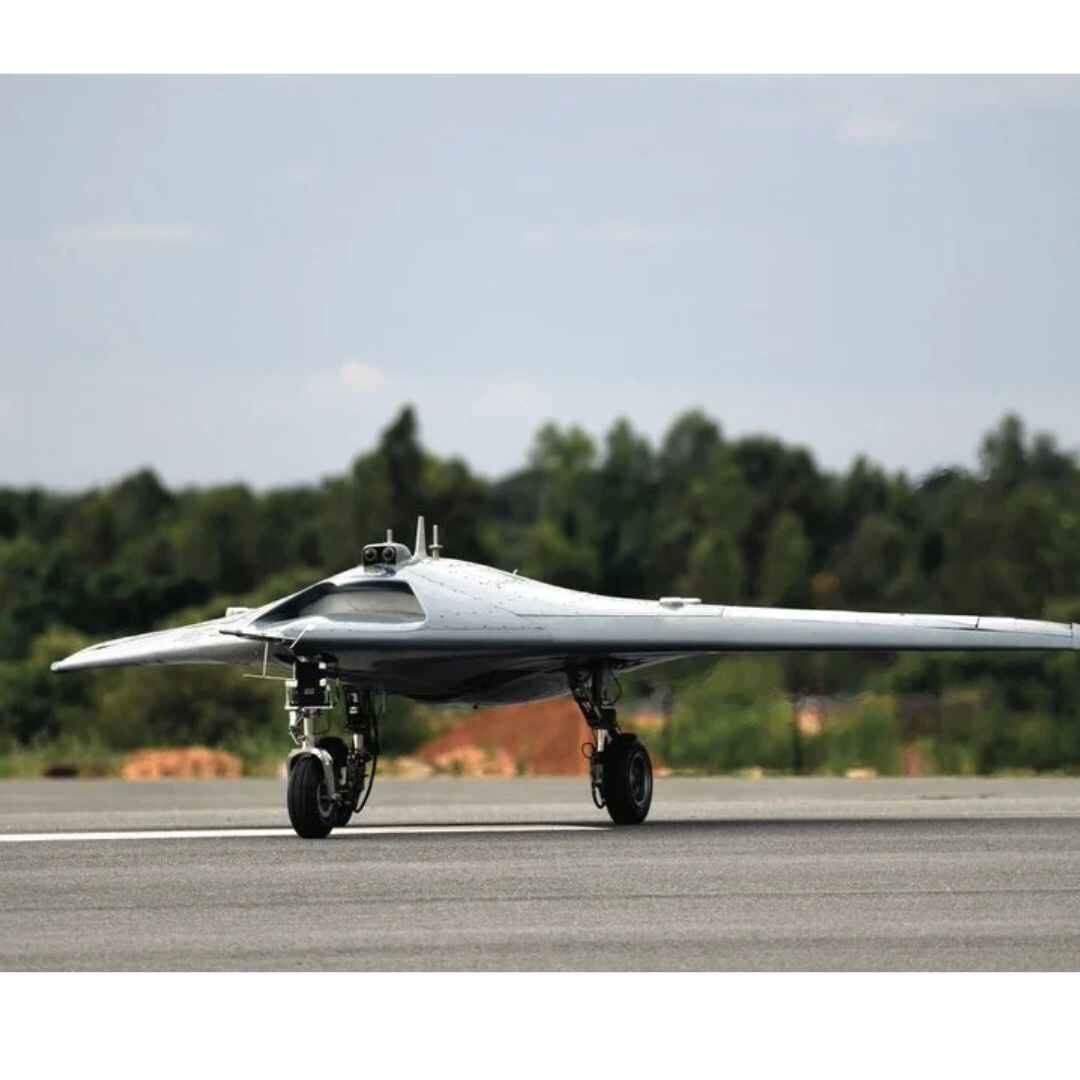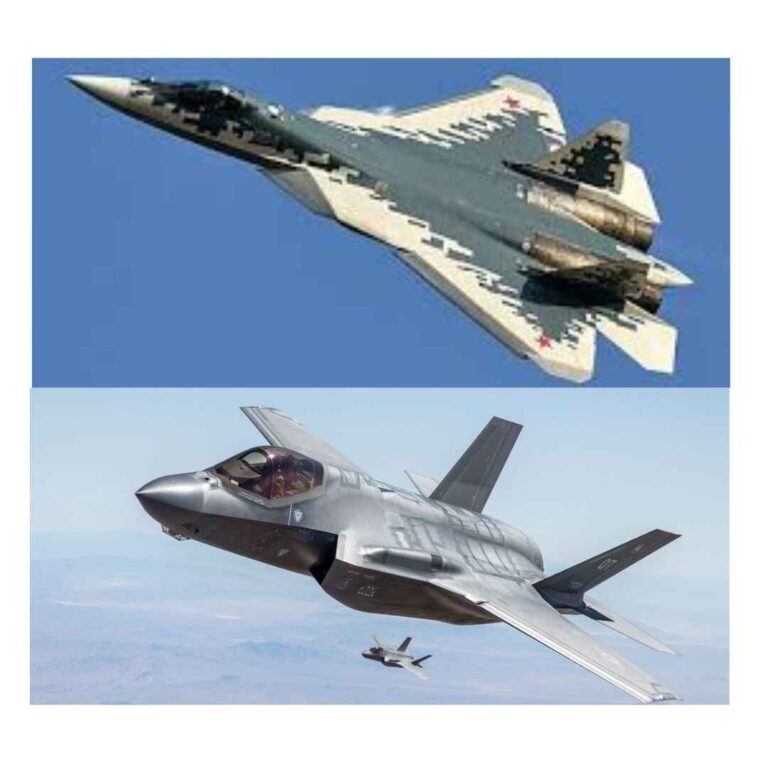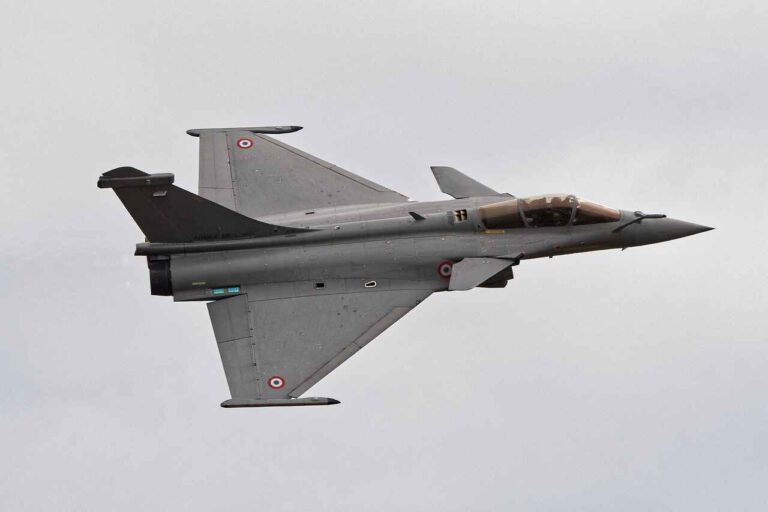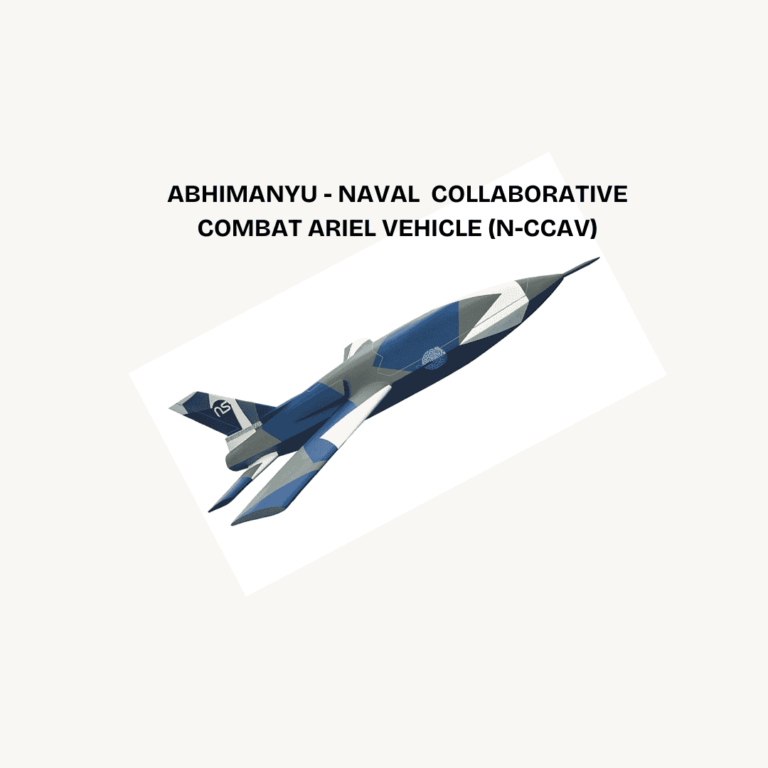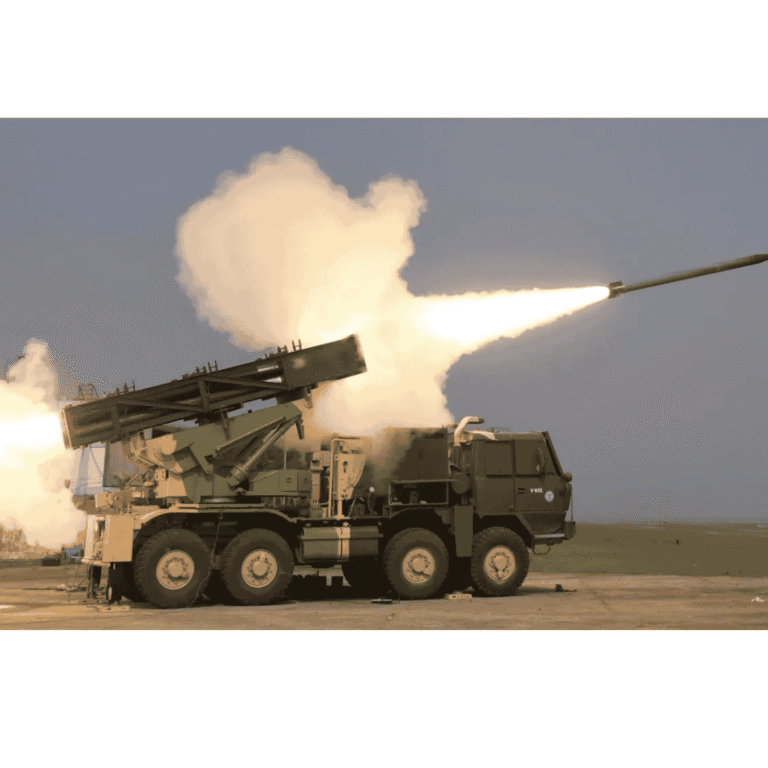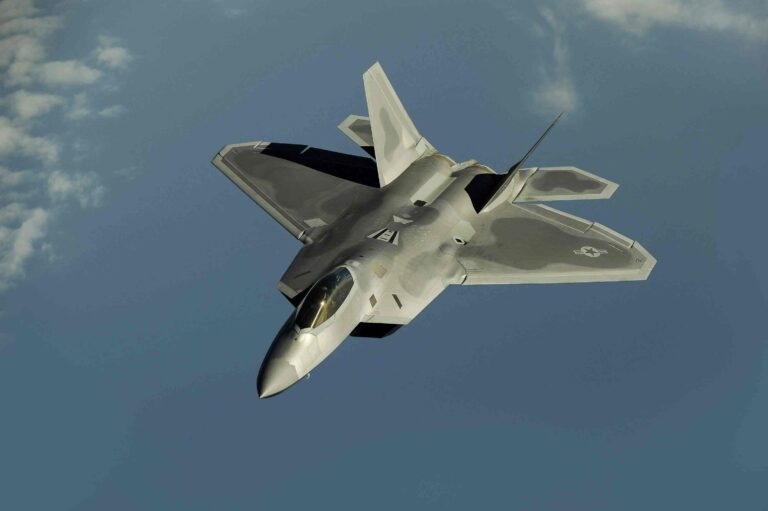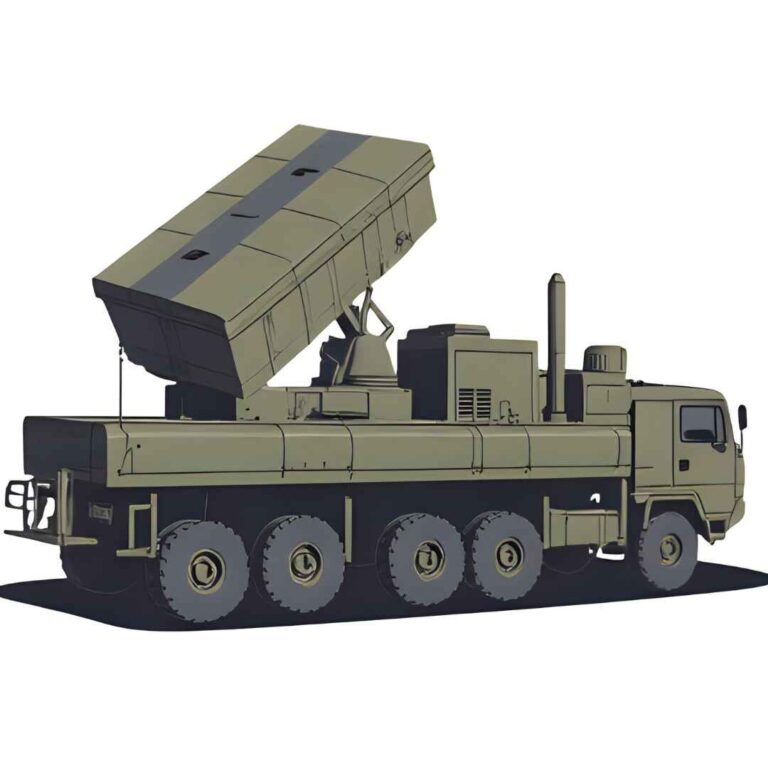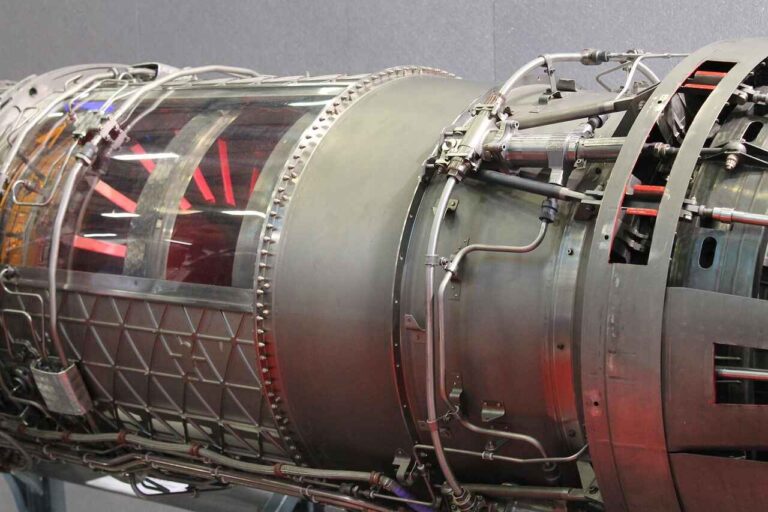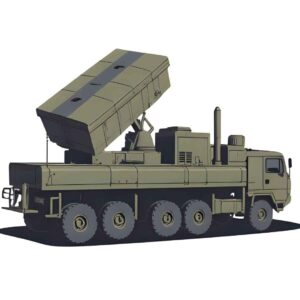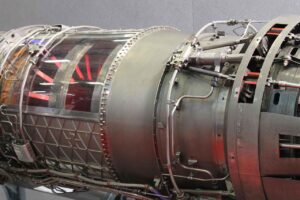Introduction
Ghatak UCAV—formerly known under its precursor project AURA (Autonomous Unmanned Research Aircraft)—stands as one of India’s most ambitious and secretive aerospace endeavors. Spearheaded by the Defence Research and Development Organisation (DRDO) and the Aeronautical Development Agency (ADA), Ghatak represents a bold attempt to place India among a select group of nations with operational stealth drones capable of deep penetration, electronic warfare, and autonomous strike missions.
The growing relevance of UCAVs in global conflicts—from the Middle East to Eastern Europe—has demonstrated their potential as strategic force multipliers. Whether it’s the U.S. Air Force’s X-47B, China’s GJ-11 Sharp Sword, or Russia’s Okhotnik-B, these platforms are reshaping airpower dynamics through low observability, precision lethality, and mission flexibility. Recognizing this trend, India’s Ghatak project aims to blend stealth technology, autonomous operations, and indigenous propulsion to create a next-generation combat drone that can operate in contested environments with minimal human input.
As India seeks to strengthen its deterrence capabilities and operational autonomy, Ghatak is more than a technological milestone; it is a strategic enabler of India’s future air warfare strategy.
Background
The journey of the Ghatak UCAV began under the experimental project titled AURA (Autonomous Unmanned Research Aircraft), which was officially unveiled by the Defence Research and Development Organisation (DRDO) around 2009. Initially conceptualized as a technology demonstrator for stealth and autonomous flight, AURA laid the groundwork for what would later evolve into India’s first indigenous stealth combat drone—Project Ghatak.
The early vision behind AURA was to create an unmanned platform capable of high-speed, high-altitude, and precision strike missions in heavily defended airspaces. This required developing key technologies in stealth, autonomous navigation, sensor fusion, and propulsion. While the project remained low-profile for much of its early years, critical groundwork was being laid at institutions such as:
Aeronautical Development Agency (ADA) – tasked with aerodynamic design and systems integration
Gas Turbine Research Establishment (GTRE) – responsible for adapting a dry version of the Kaveri engine for propulsion
Centre for Airborne Systems (CABS) – supporting sensor and mission system development
Between 2013 and 2017, the AURA project progressed through concept design, wind tunnel testing, and stealth shaping validations. By 2018, as the program matured technically, it transitioned into a more focused and mission-specific entity: Project Ghatak. Unlike AURA, which served as a broad experimental platform, Ghatak was conceived as a dedicated UCAV intended for operational deployment by the Indian Air Force.
The project also benefited from technological cross-pollination with India’s Advanced Medium Combat Aircraft (AMCA) program. Both platforms share common objectives in stealth optimization, radar-absorbent materials, and sensor integration. The stealth shaping and internal weapon bay architecture of Ghatak are directly influenced by AMCA research, enabling both cost-efficiency and design synergy.
Although DRDO has remained guarded about Ghatak’s full capabilities and development status, official reports and defense sources suggest that the technology demonstrator has already entered the prototype fabrication and subsystem testing phase. The stealth airframe’s radar cross-section (RCS) models have been tested, and work on autonomous flight control systems is actively underway.
The evolution of Ghatak from a research prototype into a strategically-oriented UCAV project underscores India’s long-term commitment to self-reliant aerial warfare technologies. As the project moves forward, it not only reflects technological ambition but also India’s recognition of the shifting paradigms in air combat—where stealth, autonomy, and survivability are fast becoming decisive factors.
Design and Stealth Architecture
The Ghatak UCAV embodies a significant leap in India’s aerospace design capabilities, with its configuration and systems tailored for high survivability and precision in contested airspaces. At its core, Ghatak is a flying-wing stealth platform, designed to minimize its radar and infrared signature while maximizing endurance, payload capacity, and mission flexibility.
Flying-Wing Configuration
The Ghatak employs a tailless flying-wing design, similar to global stealth UCAVs like the U.S. X-47B and China’s GJ-11. This geometry:
- Eliminates vertical and horizontal stabilizers, reducing radar reflections.
- Minimizes mechanical control surfaces, lowering radar cross-section (RCS).
- Enhances lift-to-drag ratio, improving endurance and loitering capabilities.
This configuration also enhances aerodynamic efficiency, making the Ghatak suitable for long-range strike missions, electronic warfare (EW), and suppression of enemy air defenses (SEAD).
Radar Cross-Section (RCS) Reduction
Stealth in modern UCAVs is achieved not just through shape but also through material science. Ghatak’s RCS reduction features likely include:
- Angular faceting and curved surfaces to deflect radar waves away from the radar source.
- Radar-absorbent materials (RAM) in its skin coating to diminish radar return.
- Edge alignment techniques to reduce radar “hot spots” at panel seams and control surfaces.
- S-shaped air intakes to shield the engine’s compressor face from radar exposure.
These design choices are intended to ensure that Ghatak remains virtually undetectable until it is close to its target—a key requirement for deep-penetration strike missions.
Internal Weapons Bay
In contrast to conventional drones that carry weapons on external pylons, Ghatak is designed with a fully internal weapons bay, which:
- Preserves the UCAV’s stealth profile during the entire mission cycle.
- Allows it to carry precision-guided munitions (PGMs), stand-off weapons, and possibly loitering munitions.
- Reduces aerodynamic drag and RCS, unlike underwing payload configurations.
While exact payload capacity is classified, estimates suggest it will carry 500–1000 kg of ordinance, optimized for surgical strikes.
Infrared and Acoustic Signature Management
To evade infrared tracking systems and heat-seeking missiles, Ghatak’s design is expected to incorporate:
- Engine exhaust cooling mechanisms (such as serrated nozzle edges).
- Shielding and heat-dissipating structures to reduce IR emissions.
- Engine placement within the fuselage and masked exhaust systems to limit visibility from above and below.
Combined with its subsonic operating speeds, these features help maintain low detectability across radar and thermal spectrums.
Modular and Scalable Design
While Ghatak’s initial variant is expected to be optimized for strike missions, its modular design may allow:
- Future variants with electronic warfare suites, satellite communication arrays, or reconnaissance pods.
- Optional upgrades to swarm leadership capabilities or manned-unmanned teaming (MUM-T) in conjunction with Tejas or AMCA.
- Possible naval variants for carrier-based operations is a long-term potential.
Propulsion and Engine Development
A critical pillar of the Ghatak UCAV project is its indigenous propulsion system, designed to deliver both stealth and performance while minimizing external dependency. Propulsion is one of the most challenging aspects of unmanned combat systems, especially when stealth, endurance, and thrust all must coexist within tight design constraints. India’s approach with Ghatak revolves around adapting and optimizing the dry variant of the Kaveri engine, which is being developed by the Gas Turbine Research Establishment (GTRE).
The Dry Kaveri Engine: Core Propulsion System
The Ghatak is expected to be powered by a non-afterburning (dry) version of the GTX-35VS Kaveri engine, originally designed for the Tejas fighter aircraft. While the original Kaveri project faced significant delays and performance limitations in manned platforms, the thrust-to-weight ratio, compact size, and reduced heat signature of the dry Kaveri make it an ideal fit for a stealth UCAV. The key features include:
- Thrust output of ~46–52 kN, sufficient for subsonic UCAV missions.
- Lower infrared signature, aiding in stealth and survivability.
- Simplified engine core, reducing weight and complexity.
- Reduced acoustic footprint, critical for electronic stealth.
This adaptation signifies a strategic repurposing of indigenous R&D assets toward platforms where performance trade-offs are more acceptable than in manned fighter programs.
Engine Integration Challenges
Despite promising progress, integrating an indigenous engine into a stealth UCAV comes with several engineering and logistical challenges:
- Thermal management: The airframe must dissipate engine heat without compromising infrared stealth.
- Intake and exhaust shaping: To ensure minimal radar exposure and turbulent airflow.
- Vibration and noise damping: To meet low-observability benchmarks across the acoustic spectrum.
- Size and power matching: Ensuring engine-airframe synergy without compromising payload or endurance.
Work is ongoing to align engine performance with the airframe’s aerodynamic and stealth requirements. Ghatak’s propulsion bay and engine ducts are believed to have undergone significant redesigns to accommodate the engine in a radar-invisible configuration.
Collaboration and Technology Infusion
The Ghatak propulsion effort has also benefitted from:
- Technical cooperation with France’s Safran, which previously partnered with DRDO on Kaveri enhancements.
- Wind tunnel and thermal signature testing, in collaboration with DRDO labs and academic institutions.
- Integration of indigenous FADEC (Full Authority Digital Engine Control) systems for better thrust modulation and engine health monitoring.
While foreign engines were considered in the early conceptual stages, the emphasis has shifted toward achieving propulsion self-reliance, with strategic imperatives driving India away from long-term dependency.
Avionics, Autonomy and AI Integration
At the heart of the Ghatak UCAV project is a sophisticated package of avionics, sensors, and AI-driven technologies that allow the drone to operate with minimal human intervention in complicated, high-risk scenarios. As unmanned combat progresses from remotely piloted systems to fully autonomous warfare platforms, the incorporation of cutting-edge electronics and artificial intelligence is crucial to Ghatak’s operational viability and strategic relevance.
Autonomous Mission Control and Flight Systems
Ghatak is envisioned as a highly autonomous platform, capable of executing entire mission cycles—takeoff, navigation, target acquisition, engagement, and return—without direct pilot input. Its onboard flight control computers, integrated with redundant sensors and navigation modules, will:
- Maintain stable flight under stealth-configured tailless dynamics, which are inherently less stable than traditional designs.
- Perform real-time obstacle avoidance and terrain mapping using LIDAR, satellite data, and synthetic aperture radar (SAR).
- Manage dynamic threat assessments and rerouting in hostile airspaces.
This level of autonomy ensures operational effectiveness in GPS-denied or communications-contested environments, critical for deep-strike and anti-access missions.
Sensor Fusion and Situational Awareness
The Ghatak UCAV will rely on an advanced sensor fusion architecture, enabling a coherent real-time picture of the battlespace through:
- Electro-Optical/Infrared (EO/IR) sensors for visual and thermal tracking.
- Synthetic Aperture Radar (SAR) for all-weather, high-resolution ground imaging.
- Passive Electronic Support Measures (ESM) to detect enemy radar and communication emissions.
- Multispectral target acquisition systems that can identify and prioritize threats autonomously.
These sensors feed into a central data fusion engine that correlates, classifies, and prioritizes targets while managing Ghatak’s navigation and evasion tactics.
Artificial Intelligence and Machine Learning Integration
AI is integral to Ghatak’s capability set, particularly in:
- Target recognition and classification: AI algorithms enable rapid and accurate identification of hostile systems such as radar installations, missile batteries, or mobile command posts.
- Autonomous decision-making: The onboard AI can evaluate threat levels, calculate risk, and decide whether to engage or abort based on mission rules of engagement.
- Swarm coordination: Ghatak is expected to operate in concert with other UCAVs, drones, or manned fighters (e.g., AMCA or Tejas), leveraging AI-driven manned-unmanned teaming (MUM-T) frameworks.
India’s defense ecosystem, through DRDO and emerging defense-tech startups, is also working on AI-enabled EW systems, cyber defenses, and predictive maintenance, all of which could enhance Ghatak’s sustainability and resilience in the field.
Command, Control, and Communication (C3) Systems
Ghatak’s command and control backbone is being developed to support:
- Secure satellite communication (SATCOM) for long-range control.
- Data-link systems compatible with IAF’s Integrated Air Command and Control System (IACCS).
- Resilience against jamming and cyber interference, ensuring robustness in electronic warfare environments.
Additionally, onboard autonomous fail-safes allow Ghatak to return to base or abort missions in case of communication loss, minimizing the risk of compromise.
Human-in-the-Loop Capabilities
While designed for high autonomy, Ghatak will retain “human-in-the-loop” or “human-on-the-loop” configurations for:
- Weapons release authorization.
- Mission profile updates during live operations.
- Intelligence feedback and adaptive learning from mission outcomes.
This hybrid approach ensures accountability and compliance with international norms while maximizing operational flexibility.
Project Status and Development Milestone
| Year | Milestone | Details and Significance |
| 2009 | AURAproject officially initiated | DRDO launches AURA (Autonomous Unmanned Research Aircraft) as a stealth UCAV concept. |
| 2011-2013 | Initial design phase and feasibility studies | Flying-wing design selected; stealth RCS shaping studies begin. |
| 2014 | Scaled models undergo wind tunnel testing | Tests conducted at DRDO and academic facilities to validate aerodynamics and stealth shape. |
| 2015-2017 | Radar cross-section (RCS) testing and IR signature modeling | Progress in stealth optimization; stealth shaping validated in sub-scale models. |
| 2018 | Project officially renamed as Ghatak UCAV | Ghatak becomes a dedicated mission-oriented project, evolving from AURA’s research base. |
| 2019 | Dry Kaveri engine integration begins | GTRE starts adapting Kaveri for unmanned propulsion, focusing on thermal and acoustic stealth. |
| 2020 | Prototype structure fabrication and system integration initiated | Airframe construction begins; key avionics, sensors, and flight systems integrated. |
| 2021 | High-speed taxi trials | Unconfirmed reports suggest ground run or low-speed tests were conducted at test facilities. |
| 2022-2023 | Avionics, AI, and autonomy testing under simulated conditions | Subsystems tested for navigation, obstacle avoidance, and autonomous mission execution. |
| 2024 | Pre-first flight systems validation underway | Final stages of testing critical subsystems before test flights. |
| 2025 (Expected) | First flight of technology demonstrator | Full airframe and propulsion test in controlled conditions, marking major development leap. |
| 2026-2028 (Projected) | Development of full-scale prototype and flight test series | Multiple UCAV demonstrators to undergo performance trials, stealth evaluations, and weapon tests. |
| Post 2028 | Induction readiness and operational clearance phase | Subject to successful trials, Ghatak may enter limited production for IAF integration. |
Comparison with Global UCAV Programmes
| Feature | Ghatak (India) | X-47B (USA) | GJ-11 Sharp Sword (China) | Okhotnik-B (Rusia) |
| Developer | DRDO, ADA, GTRE | Northrop Grumman | AVIC Chengdu Aircraft Industry Group | Sukhoi Design Bureau |
| Configuration | Flying wing, tailless | Flying wing, tailless | Flying wing, tailless | Flying wing, with blended fuselage |
| Stealth | Yes, radar-absorbing design & materials | Yes, high stealth RCS | Yes, optimized for low observability | Yes, stealth shaping & internal bays |
| Engine | Dry Kaveri (indigenous) | Pratt & Whitney F100-220U | Likely WS-13 derivative | AL-31 derivative (turbofan) |
| Autonomy | High, with AI-based mission systems | Semi-autonomous to fully autonomous | High, reported autonomous capability | Semi-autonomous, operator-in-loop |
| Payload Capacity | Estimated 500–1000 kg (internal) | 2,000 kg | Estimated 1,000 kg | Up to 2,000 kg |
| Combat Role | Precision strike, SEAD, surveillance | Carrier-based strike & ISR | Stealth strike, EW, reconnaissance | Strike, reconnaissance, loyal wingman |
| Weapons Bay | Internal | Internal | Internal | Internal |
| First Flight | Expected 2025 (tech demonstrator) | 2011 | 2013 (test phase) | 2019 |
| Operational Status | Under development | Retired after demonstrator phase | Presumed limited service | Pre-operational trials ongoing |
| Strategic Vision | Self-reliant stealth combat drone | Carrier-compatible UCAV proof-of-concept | Long-range stealth drone for PLA-AF | Loyal wingman and strike drone for VKS |

